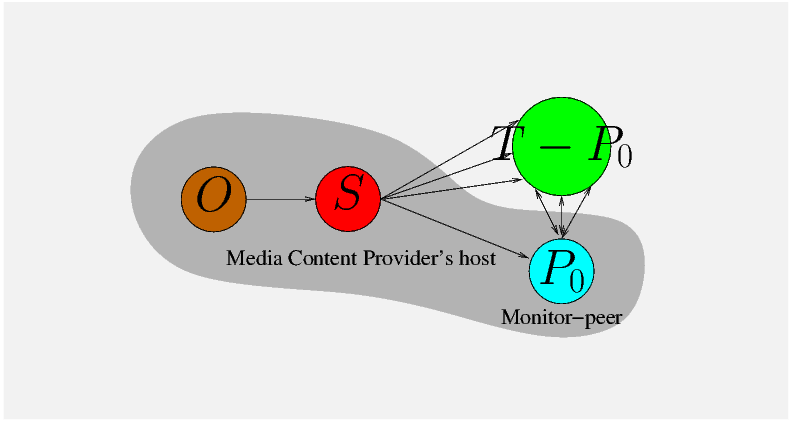| (2) |
being the number of peers in the team. Next, must forward this chunk to the rest of peers of the team. Chunks received from other peers are not retransmitted.
- Send (over TCP) to the number of peers in the list of peers.
- For each peer
in the list of peers:
- Send (TCP) to the endpoint.
- Append to the list of peers.
In incomming peer performs:
- Receive (TCP) from the number of peers in the list of peers.
- For each peer
in the list of peers:
- Receive (TCP) end endpoint fron the splitter.
- Send (UDP) to a [hello] message.
Because the [hello] messages can be lost, some peer of the team could not know in this presentation. However, because peers also learh about their neighbors when a [IMS] message is received, the impact of these lost should be small.
Notice that this rule will remove from the peer’s lists those peers that perform a impolite churn (those peers that leave the team without sending the [goodbye] message).

- As a consequence of the impolite churn and peer insolidarity, it is unrealistic to think that a single video source can feed a large number of peers and simultaneously to expect that the users will experience a high QoS. For this reason, the team adminitrator should monitorize the streaming session because, if the media is correctly played by the monitor peer, then there is a high degree of probability that the peers of the team are correctly playing the media too.
- At least one monitor peer is created before any other peer in the team
and for this reason the transmission rate of the first monitor peer is
.
However, the transmission rate of the second (first standard) peer, and the
monitor peer, is:
where is the average encoding rate of the stream. When the size of the team is , the transmission rate of all peers (included the monitor peers, obviously) of the team is:
(3) Therefore, only the first (monitor) peer is included in the team without a initial transmission requirement. Notice also that
(4) which means that when the team is large enough, all the peers of the team will transmitt the same amount of data that they receive.
- In order to minimize the number of loss reports (see Rule 10) Section 4.7) in the team, the monitor peers are the only entities allowed to complain to the splitter about lost chunks.
- In the rest of peers , the free-riding control mechanism (see Rule ??) will remove from the list of peers.
- All monitor peers will complain to the splitter about chunks that the splitter has sent to .
- After receiving a sufficient number of complains, the splitter will delete from his list.
In order to handle this unpredictable retransmission delay, the peer’s buffers should store at least chunks. This means that, the team size is limited by the buffer size, i.e., in the DBS module it must be hold that
| (5) |